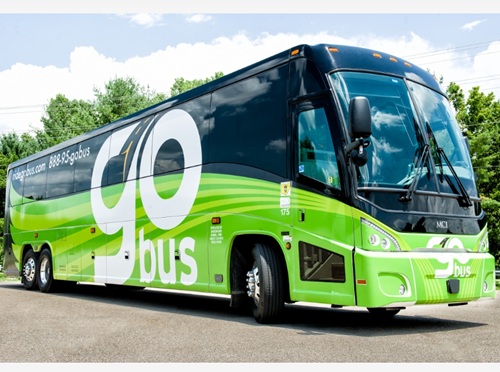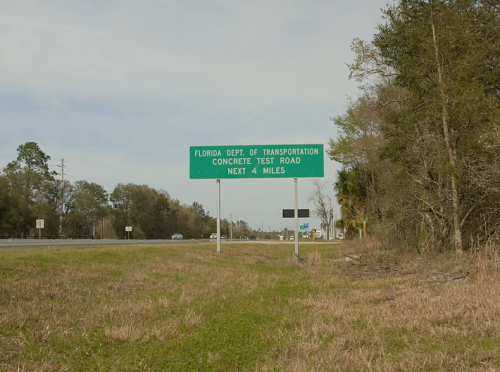Motorists on northbound U.S. 301 will soon play an important role in an effort by the Florida Department of Transportation to identify the most effective concrete pavement designs for statewide usage.
[Above photo by Florida DOT]
The agency said its new concrete “test road” is the first of its kind in the southeastern United States; a field laboratory that uses “live” traffic flow to test concrete pavement and base designs.
Pavement testing equipment and monitors are strategically placed along the four-mile roadway segment, allowing Florida DOT engineers to monitor pavement conditions as its subjected to vehicular traffic in real time, including heavy truck traffic.
The concrete test road’s design also uses the existing U.S. 301 northbound lanes to divert traffic off the test road when needed, providing agency engineers with full access to the test areas – allowing for new test sections to be constructed without interruption to U.S. 301 traffic.

“Serving Florida’s communities is the heart of [our] mission and U.S. 301 concrete test road is an innovative tool to allow us to improve our roads,” said Florida DOT Secretary Jared Perdue in a statement.
“Using innovative technologies to collect real time data on the efficacy of various types of concrete available to use on Florida’s roads allows us to use the most effective materials to create resilient transportation corridors and reliable supply chains while prudently using taxpayer dollars,” he added. “The more resilient the materials we use, the longer they last, reducing our maintenance costs and construction times, limiting the congestion travelers feel in active work zones.”

“The concrete test road is a unique facility that incorporates cutting-edge technology to help further our understanding of pavement safety and performance,” noted Howie Mosely, Florida DOT’s state materials engineer.
“The information we collect will help us optimize concrete pavement designs for safety, longevity and cost-effectiveness, ultimately delivering a better roadway experience to residents and visitors to our state,” he added.
State departments of transportation are regularly involved in a wide variety of testing efforts, including everything from work zone safety systems to drones.

For example, the Ohio Department of Transportation and Virginia Department of Transportation are both currently involved in testing several technology packages designed to improve work zone safety at highway construction sites.
Meanwhile, the North Carolina Department of Transportation and Massachusetts Department of Transportation are two of several state DOTs involved in drone aviation system tests.
Finally, the Minnesota Department of Transportation exemplifies how state DOTs across the country are involved in testing program for self-driving vehicles – especially for public transit needs in rural areas.
 States
States
Master Plan Map Completed for Utah Trail Network
October 31, 2025 States
States

